|
||
      |
Letters: Oh, wait, let me guess—you read the New Yorker!
No sweat?
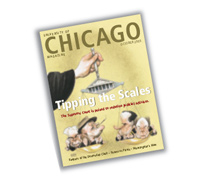 David
A. Strauss’s “Supreme
Swings” in the October/05 issue speaks of a time “almost
a century ago” when then “new laws” held “people
couldn’t work in sweatshops for more than ten hours a day, even if
they wanted to.” Strauss claims the Supreme Court of the era ruled
these laws unconstitutional, on freedom-of-contract grounds—even as
those rulings “may sound ridiculous today.”
David
A. Strauss’s “Supreme
Swings” in the October/05 issue speaks of a time “almost
a century ago” when then “new laws” held “people
couldn’t work in sweatshops for more than ten hours a day, even if
they wanted to.” Strauss claims the Supreme Court of the era ruled
these laws unconstitutional, on freedom-of-contract grounds—even as
those rulings “may sound ridiculous today.”
Huh? How does it “sound ridiculous today” to object to laws that “preven[t] people...from work[ing] in sweatshops for more than ten hours a day, even if they wan[t] to”? There are no such U.S. laws today. Perhaps every country outside the United States does indeed impose flat caps on hours worked (France’s cap is notoriously 35 hours per week; Mexico’s is 48). But the U.S. is unique in imposing no cap at all. It’s perfectly legal for an American boss to demand: “Work 110 hours this week—or you’re fired!”
Just ask cabdrivers, or clerks at corner groceries, or Chinatown seamstresses, or law-firm associates, or medical residents. (U.S. overtime law addresses pay, not maximum hours.)
And America doesn’t outlaw “sweatshops,” either. Neglecting to define his term, Strauss appears to mean gritty workplaces where workers sweat. But those remain perfectly legal: Will Strauss walk through a Cincinnati metal-casting foundry next July, when indoor temperatures max out at toaster-oven levels? Will he help workers burn a Belle Glade, Florida, sugar cane field in August? He can collect gallons of perfectly legal American-worker sweat.
To claim, as Strauss does, that opposition to hour-capping and anti-sweatshop laws “sound[s] ridiculous today” is itself ridiculous—because there are no such U.S. laws “today.” Let’s all be glad our Congress hasn’t taken the Orwellian step of dictating how much we can work, much less barring us from perspiring on the job. And let’s tell Chicago’s law faculty the news.
Donald C. Dowling Jr., AB’82
Scarsdale, New York
High point is a low
David A. Strauss says, “Almost everyone thinks that Brown v. Board of Education...was a high point in the history of the court and American law.” It’s been my impression that almost anyone who knows anything about the Constitution thinks it an abominably wrought decision (e.g., Gunnar Myrdal, the Swedish socialist and sociologist, as the supreme authority on the constitutional matter in question). And, of course, American education became more segregated than ever after Brown, but such inconvenient consequences need not trouble its see-no-evil supporters. The decision makes them feel good, and that’s all that really matters. For someone at the U of C in those days not to have noticed the “transformation” of a vibrant, integrated Hyde Park and South Shore, abetted largely by the abominable degradation of conditions in its public schools, would have been doing the ostrich one better. Brown’s consequences for the University itself I leave to others to go into.
For this kind of “analysis” to appear in the magazine of a great university, the university of Hayek and Knight, Banfield, Strauss, and others, is sad and troubling, to say the least.
Ben Manaster, AB’59
Los Angeles
Human-interest lesson
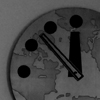 Your
human-interest story on the Bulletin of the Atomic Scientists (“Nuclear
Force,” October/05) was a welcome reminder of the continuing reality
of nuclear weapons. Yet the story did not approach the grim consequence
of using these weapons of mass destruction. We would rather not think about
it. While our government frets about nuclear threats from Iran, North Korea,
and terrorists, many governments and people across the world worry about
the most dangerous arsenal of the globe—in the hands of a United States
military and under a presidential policy of never refusing the option of
using nuclear weapons in any conflict.
Your
human-interest story on the Bulletin of the Atomic Scientists (“Nuclear
Force,” October/05) was a welcome reminder of the continuing reality
of nuclear weapons. Yet the story did not approach the grim consequence
of using these weapons of mass destruction. We would rather not think about
it. While our government frets about nuclear threats from Iran, North Korea,
and terrorists, many governments and people across the world worry about
the most dangerous arsenal of the globe—in the hands of a United States
military and under a presidential policy of never refusing the option of
using nuclear weapons in any conflict.
We would do well to subscribe to the Bulletin of Atomic Scientists as a regular mediation of the daily doomsday danger posed by the continued presence of nuclear weapons. We Americans have a unique responsibility. Our nation is the only one to have used atomic bombs in warfare. Nuclear weapons continue to be the final enforcer of American global power. Who can be confident our president, this one or the next, will not use them? And U.S. nuclear weapons provoke other nations to desire them as enforcers of their power.
Maybe events like hurricanes and terrorist acts can open our hearts and our imaginations to understand nuclear devastation. Only by paying attention to the horrific consequences of nuclear weapons can we resolve to eliminate our American role in posing a nuclear threat to all life on earth.
Peter Klotz-Chamberlin
Santa Cruz, California
Clock strikes 12
Over the years the Bulletin of Atomic Scientists has carried many fine and valuable articles. However, through its Doomsday Clock, it has generated an unrealistic understanding of an extremely important subject: the probability of nuclear war.
In setting the hands of the clock at different positions, in accordance with the guesses that a number of eminent people make concerning the probability of nuclear war at different times, the Bulletin creates the impression that what is most important is that the instantaneous probability of nuclear war be kept low, and that, if this is done, nuclear weapons can be lived with forever. The scientific reality is otherwise. As long as nuclear arsenals exist, the probability of nuclear war approaches certainty because it is a function of time. This truth can be expressed precisely by stochastic equations. Scientists such as Sir Stephen Hawking acknowledge this. Thus the only setting of the clock is midnight. In 1947 the clock should have been set at midnight and left there. That truly expresses the urgency of achieving nuclear disarmament and developing nonviolent means for resolving conflicts.
I have brought this problem to the Bulletin’s attention a number of times, and so far it has not acknowledged the difficulty. This is particularly peculiar because such principles are used in the fields of many scientists associated with the Bulletin. Among the most prominent was Subrahmanyan Chandrasekhar, the U of C professor of astrophysics whose 1942 study, “Stochastic Principles in Physics and Astronomy,” contributed to his work on dwarf stars that won him a Nobel Prize. Unfortunately, Professor Chandrasekhar apparently did not realize that stochastic principles also apply to the failure probability of nuclear deterrence.
The Bulletin is not alone in failing to acknowledge that stochastic principles govern the probability of nuclear accidents and war. Virtually all nuclear-deterrence strategists and political scientists make the same mistake. The mistake could not be more serious; if continued, it can lead to the destruction of “civilization.”
One U of C professor who did apply stochastic principles to the probability of war was Quincy Wright, professor of international law. His brief discussion of the subject can be found in his 1942 book, A Study of War. Because nuclear weapons had not yet been developed, the urgency of nuclear disarmament was not then apparent.
Bradford Lyttle, AM’51
Chicago
Full disclosure
 In
“Scarpe Diem” (“Chicago
Journal,” October/05) Meredith Meyer describes the Institute for
Justice as “a Washington, DC-based libertarian law firm.” This
description is incomplete and casts the institute in a favorable, or at
least neutral, light. Meyer’s article treats IJ as a warm, fuzzy entity
seeking to implement goals with which one would be hard pressed to disagree.
In
“Scarpe Diem” (“Chicago
Journal,” October/05) Meredith Meyer describes the Institute for
Justice as “a Washington, DC-based libertarian law firm.” This
description is incomplete and casts the institute in a favorable, or at
least neutral, light. Meyer’s article treats IJ as a warm, fuzzy entity
seeking to implement goals with which one would be hard pressed to disagree.
Further research indicates that IJ is more than a “libertarian law firm.” I’m sure I don’t know why the University of Chicago School of Law is “in partnership” with the Institute for Justice, but as long as it is, Meyer ought to have done more to flesh out the organization for the Magazine’s readers. I list below only a few sources:
• Clint Bolick is IJ’s counsel for strategic litigation. Bolick coined the term “Quota Queen” to describe presidential nominee Lani Guinier. MediaTransparency.org notes that the New York Times has described him as “the maestro of the political right on issues of race” and that “[u]ntil Bolick began presenting himself as a defender of low-income African American schoolchildren, he had been most closely associated with attacks on affirmative action. He is the author of The Affirmative Action Fraud: Can We Restore the American Civil Rights Vision? published by the Cato Institute. It was Bolick who drafted a bill that would end all affirmative action programs on the federal level.”
• Phil Wilayto of Right Watch notes: “Activist groups like the Institute for Justice and the reactionary foundations that fund them have succeeded to a great extent in defining the public debate over issues of social policy as a choice between a racist status quo and a collection of ‘reform’ schemes designed to open the doors to widespread privatization and deregulation. As a result, organizations and individuals with histories of opposing every effort of the Black and Latino communities to win basic civil rights have been able to project themselves as defenders and advocates of these same communities.”
Eleanor P. Simpson, AB’65
Creve Coeur, Missouri
Report of death exaggerated
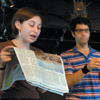 In
“Some Students Walked into a Bar” (“Arts
& Letters,” October/05), reference is made to “the late
Paul Sills.” That would have to come as a major surprise to Paul,
who is very much alive and living in Wisconsin. He still teaches improv
workshops and occasionally directs, particularly at the New Actors Workshop
he began several years ago with Mike Nichols, X’53, and George Morrison,
PhB’49.
In
“Some Students Walked into a Bar” (“Arts
& Letters,” October/05), reference is made to “the late
Paul Sills.” That would have to come as a major surprise to Paul,
who is very much alive and living in Wisconsin. He still teaches improv
workshops and occasionally directs, particularly at the New Actors Workshop
he began several years ago with Mike Nichols, X’53, and George Morrison,
PhB’49.
Furthermore, Ed Asner, X’48, never was an improviser; he was in shows at University Theater and another group on campus, and he was part of our first professional theater, Playwrights Theatre Club, which was started by Paul and David Shepherd and Eugene Troobnick in 1953 out of University Theater people including Byrne and Joyce Piven, X’50, and Barbara Harris, along with Mike Nichols (and Elaine May). We did plays, not improv shows, but we did work on Viola Spolin’s improv games during that time, since they are an invaluable tool for building an ensemble; actually, we’d begun working on them while we were still part of University Theater.
This was all before the Compass, which David and Paul started in 1955.
Sheldon Patinkin, AB ’53, AM’56
Chicago
We apologize for the erroneous report: Paul Sills continues to teach in Door County, Wisconsin, where he offers a weeklong workshop of theater games each summer.—Ed.
Cameo role
Jennifer Carnig’s article about the birth of improv comedy at the Compass (later the Deck) reminded me that in spring quarter 1956, I was able to hire Mike Nichols, Elaine May, and three other players for a total fee of $25 to perform for a dance at International House. Mike and Elaine did their “bent key” sketch and, in a spoof of Mickey Spillaine, Mike had me come on stage to be shot, commenting that “I didn’t know who he was, but I didn’t like his looks.” From such beginnings…
Phil Bock, AM’56
Albuquerque, New Mexico
Fruit of Meeropol’s labor
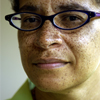 One
of my pet peeves is the attribution of a song to the singer who popularized
it, as in Laura Demanski’s reference to the song “Strange Fruit”
as “the Billie Holiday song” (“Lynching
Uncovered,” October/05). Although Holiday’s autobiography
claims authorship, the poem was written and later set to music by Bronx
schoolteacher and poet Abel Meeropol, under the pen name Lewis Allan. It
was published in the union publication New York Teacher in 1937
as “Bitter Fruit.” Meeropol’s wife and others performed
it before Holiday picked it up.
One
of my pet peeves is the attribution of a song to the singer who popularized
it, as in Laura Demanski’s reference to the song “Strange Fruit”
as “the Billie Holiday song” (“Lynching
Uncovered,” October/05). Although Holiday’s autobiography
claims authorship, the poem was written and later set to music by Bronx
schoolteacher and poet Abel Meeropol, under the pen name Lewis Allan. It
was published in the union publication New York Teacher in 1937
as “Bitter Fruit.” Meeropol’s wife and others performed
it before Holiday picked it up.
Meeropol later wrote the Frank Sinatra song “The House I Live In.” The Meeropols are probably best remembered for adopting Robert and Michael Rosenberg.
Benjamin H. Cohen, AB’60
Niles, Illinois
Unoriginal sin
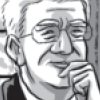 How
did you ever dream up such a clever idea as a caption
contest? Oh wait, let me guess—you read the New Yorker!
Come on. You know very well the New Yorker started having caption
contests at least six months ago. Copying their idea only highlights your
lack of originality. Your back-page cartoons were pathetically humorless
to begin with, but attempting to improve them by mimicking an infinitely
better publication is just shameful. In the future, show a little more creativity—and
a lot more discretion and respect.
How
did you ever dream up such a clever idea as a caption
contest? Oh wait, let me guess—you read the New Yorker!
Come on. You know very well the New Yorker started having caption
contests at least six months ago. Copying their idea only highlights your
lack of originality. Your back-page cartoons were pathetically humorless
to begin with, but attempting to improve them by mimicking an infinitely
better publication is just shameful. In the future, show a little more creativity—and
a lot more discretion and respect.
With disappointment (but not surprise),
Lauren M. Gaudino, AB’04, SB’04
Chicago
Remembering Wayne Booth
I never took an official course taught by Wayne Booth, AM’47, PhD’50 [see “Deaths”—Ed.], but during my years at the U of C, he became one of the most important figures in my life.
I couldn’t get into Mr. Booth’s core humanities course so I started visiting him during office hours. I told him I was entering the Foundations: Issues and Texts program and explained my area of interest. He gave me a list of books I might find interesting, and we continued to meet for discussions as I worked through the list.
He later agreed to serve as the adviser for an independent study of James Joyce’s Ulysses. Word got out and I asked if he’d mind allowing eight other students to join in, basically turning an independent study into an extra class. He laughed and agreed.
Each week the nine of us gathered in a tight circle in his office at the top of the west Harper tower, surrounded by walls of books and a window looking out over the quad. We read aloud from each chapter and Mr. Booth guided our conversations through that great maze of a book.
During our last meeting, Mr. Booth read the final section of Molly’s soliloquy. As he approached the end, his voice began to tremble. I looked up from my text to see Wayne Booth crying as he read.
yes I said yes I will yes
Today, the memory of that moment confirms the deep power of great art and pushes me onward in my own work as a sculptor. In my role as a professor, the dear memories of Wayne Booth’s generosity and his dedication to both the act and art of teaching serve as a model for the sacred relationship between teacher and student.
I am one of thousands of students who have been inspired and deeply touched by this great man. We miss him dearly but know he continues to live in the way we live our lives and the notes we made in the margins of our books.
Jeffrey Hesser, AB’91
Providence, Rhode Island
Iranian identity
In her letter published in the October/05 issue, Evelyn Paper Himelgrin-Rodman, AB’47, stated: “King Abdullah is not the first Arab monarch to visit the Oriental Institute. I am sure that the Shah of Iran visited in the 1946–47 school year.”
The shah was not an Arab; he was an Iranian who spoke Farsi (Persian), part of the Indo-Iranian subgroup of the Indo-European language family. Arabs of many nationalities speak Arabic, part of the Semitic subgroup of the Afro-Asiatic family (formerly called Hamito-Semitic). This confusing of the two peoples is a common one in the West, and it is not appreciated by either Iranians or Arabs.
Mi Mi McLaughlin, AM’60
Chicago
Numerous readers noted that in correcting the writer’s memory of when the Shah visited the Oriental Institute (which he did in the 1940s as crown prince, not as ruler), the editors neglected to correct the letter’s other error of fact. We apologize.—Ed.
The universe personified
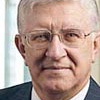 I
enjoyed President Randel’s
ramble through the meaning of life, freedom of thought, and bonding
with others whether they agree with us or not. I liked the invariance of
his conclusion: if there is a God, she should want that; if not, we should
want it anyway.
I
enjoyed President Randel’s
ramble through the meaning of life, freedom of thought, and bonding
with others whether they agree with us or not. I liked the invariance of
his conclusion: if there is a God, she should want that; if not, we should
want it anyway.
But I wonder, why do we speak as though either there is a God or there is not? God is a word of renowned ambiguity. The dictionary definition sounds as though it is human (“creator,” “ruler”), so I propose a simpler one: a personification of the universe. It boggles the mind to think of personifying, say, the U of C—let alone the world or the universe. But we have trouble dealing with things that are big, complex, and mostly unknown; so we personify, whether doing so makes sense or not.
Some of us savor the spirit of love that binds us to friends and long for a spirit of harmony with all mankind; we may personify this Great Spirit as “God.” (Compare John 4.24: Theos is pneuma, i.e., like the wind, it can be felt but not seen nor fully known. And this is the God of Love.) Others of us are mortally offended by what some say about “God”: we may call ourselves atheists, meaning we’ll have nothing to do with that kind of “God.” These two groups sound different, but that difference is not real.
There are many great and wondrous things about this universe, from farthest star to deepest psyche. We must not confuse these with what are merely structures in the mind, if we are to confront those who say offensive things, to scare people into going where they should not want to go.
David W. Joseph, SM’57, PhD’59
Lincoln, Nebraska
Designing hypotheses
I confess to being somewhat amused at Samuel Scheiner’s concern over the intellectual dishonesty in the field called Intelligent Design (“Letters,” August/05). It is apparently intellectually dishonest to hypothesize a designer from the existence of design, even though you cannot detect the designer himself, but it is not intellectually dishonest to hypothesize the existence of dark matter, which appears to be similarly undetectable.
If it is not possible to infer the existence of intelligence from the product of intelligence, what then is the theory underlying SETI? How will we know extraterrestrial intelligence when we see it, lacking any external validation, if it is not possible to recognize intelligence from its inherent characteristics?
I sometimes wonder if those who subscribe to the philosophical theory of evolution (for philosophical is truly what it is), while walking upon a Cape Cod beach and finding a radio left by a careless tourist would exclaim, “My goodness, look what the waves formed from the sand, given all of these years.”
I personally would go looking for the radio’s owner.
Lew Flagg, MBA’71
Milford, Massachusetts
Environmental bias
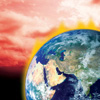 Christopher
Hayes’s “Heated Discussion”
(August/05) points out that some skeptics of global warming reflect the
views of entrenched business interests. Indeed some do, but there are many
responsible, unbiased scientists who are skeptical, too.
Christopher
Hayes’s “Heated Discussion”
(August/05) points out that some skeptics of global warming reflect the
views of entrenched business interests. Indeed some do, but there are many
responsible, unbiased scientists who are skeptical, too.
The article’s bigger omission was not addressing the bias among global-warming proponents:
• Environmental organizations receive more than $3 billion annually from the federal government for research. How receptive are government grant-givers to scientists who find evidence there is little human-caused damage to the environment?
• The environmental movement sprang explicitly from left-wing politics of the 1960s, with its anticapitalist ideology. I know, I was at Chicago in the ’60s. Ideology biases environmentalists every bit as much as industry biases others.
When I was at the University global cooling was the coming catastrophe. What will it be after global-warming fears have run their course?
Frederick Miller, JD’71
New York
It takes a forest
The article on global warming was terribly erudite and terribly gloomy. If we start right now, I believe people can make a difference by the choices they make.
The world could make a tremendous dent in the carbon dioxide in the atmosphere by planting trees. Countries like India have made enormous strides in reforestation—an area in which the United States is rapidly falling behind. A single tree consumes many pounds of carbon dioxide each day. Think of what we might achieve if rather than spending enormous sums of money on killing people, we spent a small fraction of that sum on reforestation. Such an effort would need national dedication, much like the CCC program of the 1930s. The carbon-dioxide problem would be mitigated, the drought problems would be solved, and the price of lumber would come down—oh no! The lumber industry would not like that—so it’s really all about money-grabbing after all, is it not?
E. D’Silva, MBA’88
Fort Collins, Colorado
Call to board duty
The University of Chicago Alumni Association is seeking nominations of alumni to serve on its Board of Governors, a 25-member group that sets policy relating to alumni and advises the University on matters of interest and concern to alumni.
We are looking for candidates with a record of involvement in, support for, and commitment to the University. Members are chosen from the whole alumni body. The board’s composition ideally reflects the diversity of alumni with respect to age, gender, ethnicity, geographic location, and degree(s). Board members attend meetings twice a year in Chicago, serve on board committees and task forces, and act as representatives of the University in their communities. New members will be elected at the board’s April meeting and will serve a three-year term beginning July 1, 2006.
Board service is a great way to give back to, and stay connected with, the University. If you know some alumni who could make a difference and would like to nominate them, please send us one or two paragraphs describing your candidates. Summarize each nominee’s involvement with the University and indicate any special talents or expertise the person would bring to the board. Please be sure to comment on the nominee’s breadth and/or depth of involvement and how that involvement has substantially benefited the University and its alumni. For a detailed guideline of criteria, please see our Web site. The deadline for nominations is January 15, 2006.
Please submit your nominations online or send to: Nominating Committee, The University of Chicago Alumni Association, 5555 South Woodlawn Avenue, Chicago, IL 60637; fax: 773/702-2166; or e-mail: alumniboard@uchicago.edu.
Linda Lu, AB’91
Chair, Nominating Committee
Author’s query
For a book on the effect of the 1944 G.I. Bill, we are interested in any documents you have, as well as hearing or reading your recollections, pertaining to your experience with G.I. Bill benefits, including college tuition and stipend, job training, VA mortgage, or any other. Privacy guaranteed. Please contact Glenn C. Altschuler, B-20 Day Hall, Cornell University, Ithaca, NY 14853; e-mail gcal@cornell.edu; phone: 607/255-4987.
Glenn C. Altschuler
Stuart M. Blumin
Ithaca, New York
Department of corrections
In “Dog Days” (“Cultural Studies,” August/05), Mr. Frisky’s breed was as mangled as a puppy’s chew toy; in fact Mr. Frisky is a West Highland White Terrier, aka a Westie.
Letters for publication must be signed and may be edited. To ensure
a range of views, we encourage letters of fewer than 300 words. Write Editor,
University of Chicago Magazine, 5801 S. Ellis Avenue, Chicago,
IL 60637. Or e-mail: uchicago-magazine@uchicago.edu.